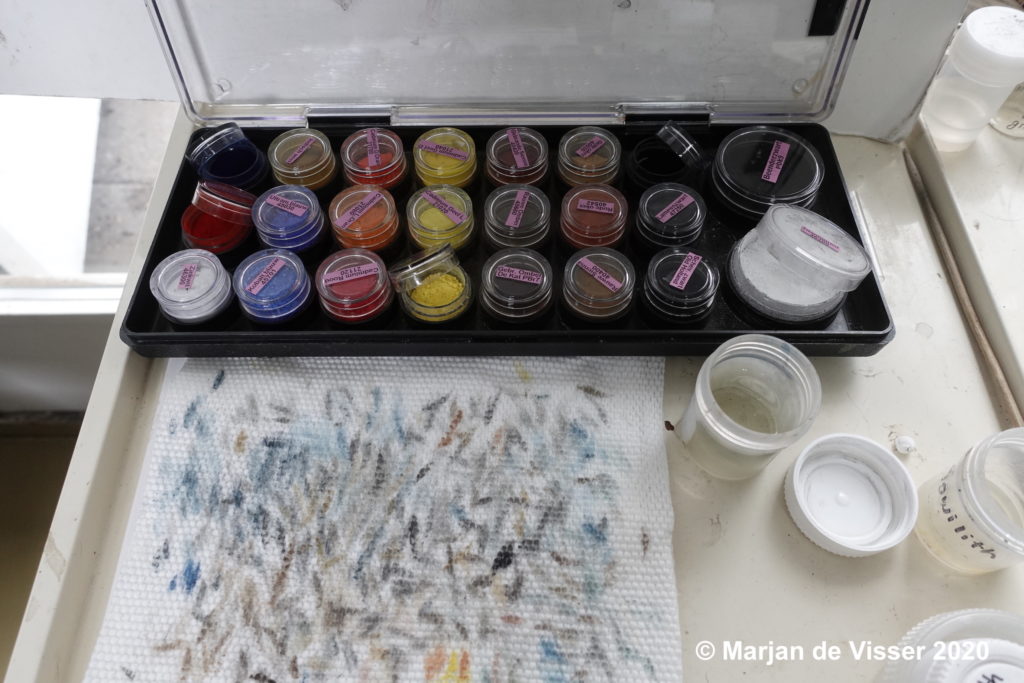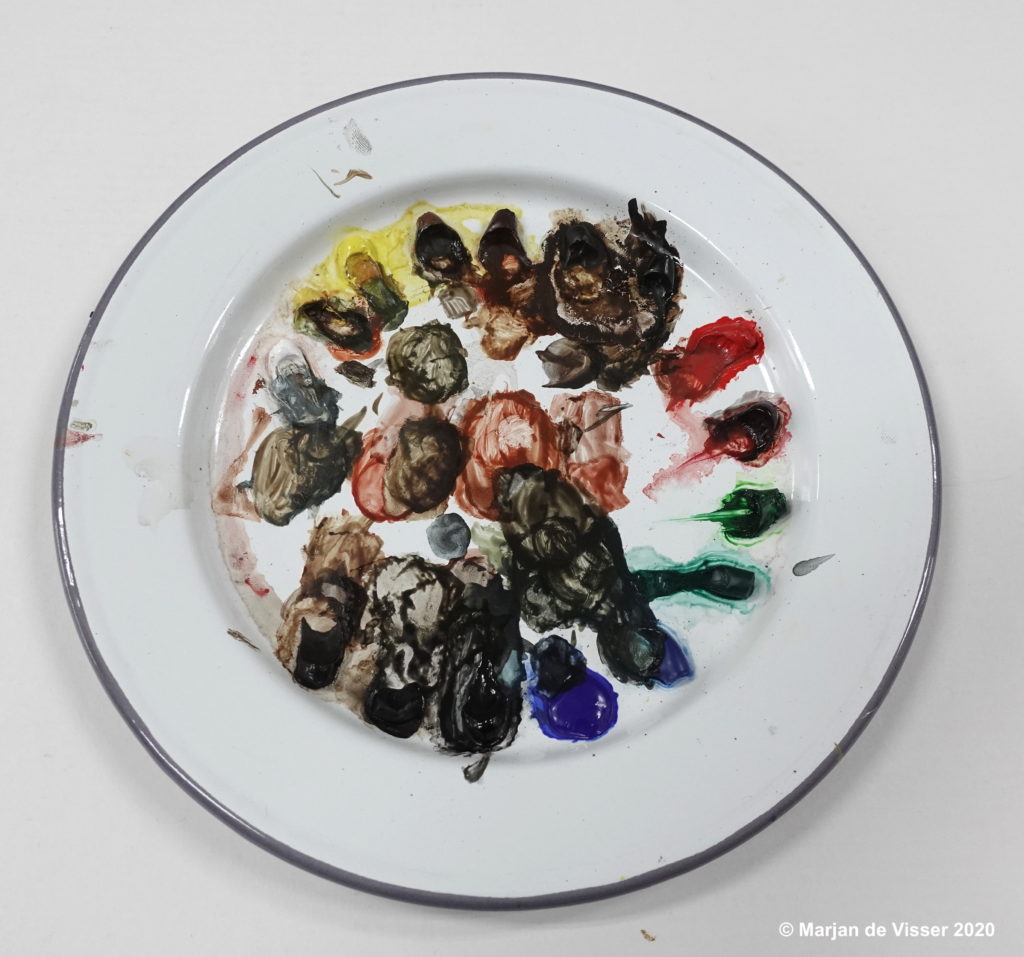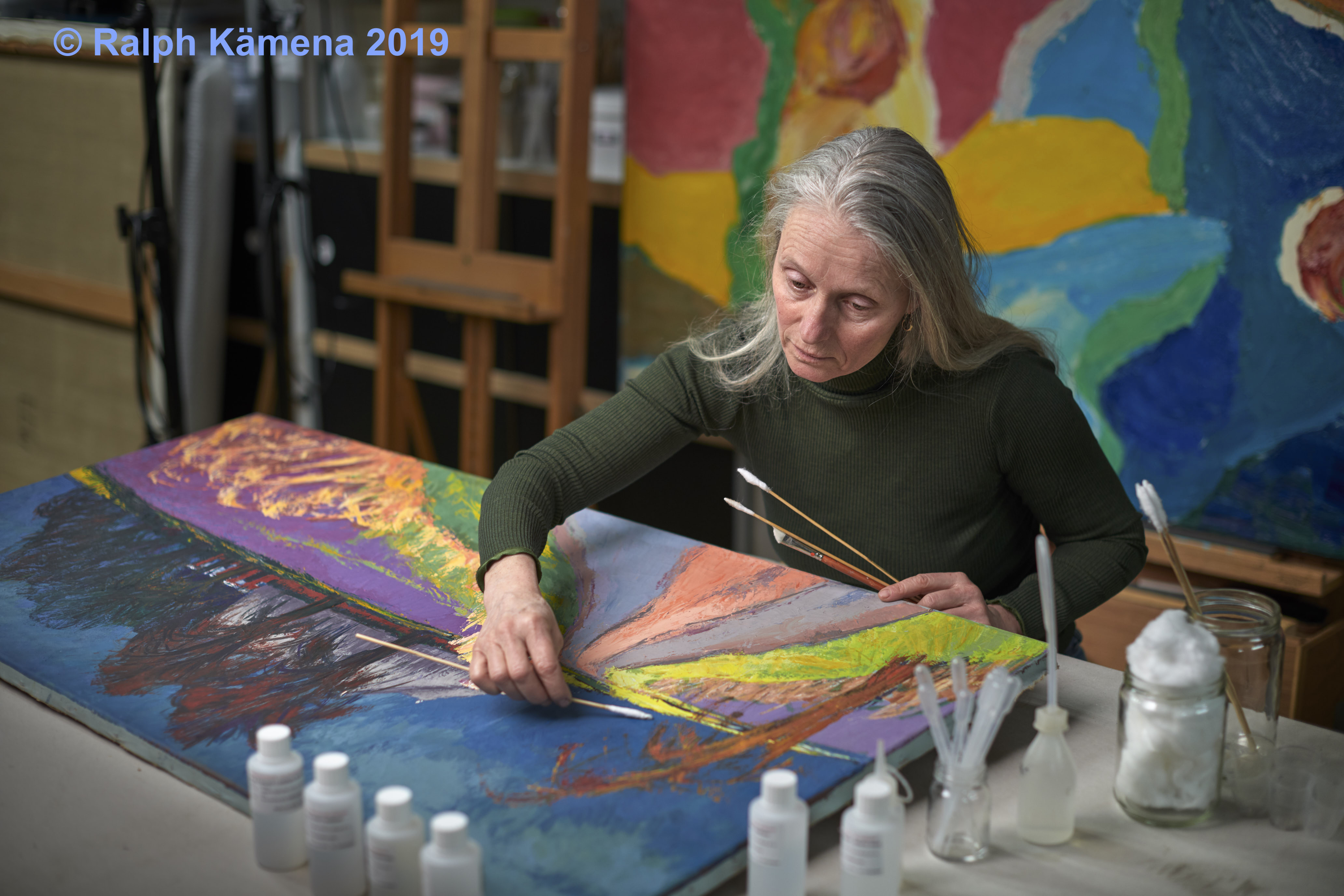Retouching Paintings
Retouching or inpainting is adjusting a gap in the paint layer. It is part of conservation and restoration treatment. As it is a later addition to the painting. When does the restorer retouches a painting? For example, when a paint layer is damaged for some reason. This can result in a loss of structure and color. However, the artist can also perform an inpainting. Sometimes the painter takes up his painting again at a later stage. Then we call is also a form of retouching.
Why retouching
Losses in paint layers can cause disturbing spots in the image. Imagine you see an abstract geometric painting with large areas of colours, yellow, red, white and black edges. And in an even yellow field we see a damaged spot with white dots. Then this will certainly catch the eye. It disturbs image of the performance. Another example is a landscape with a damage the air. Then the perspective will immediately be disrupted. As the eye draws directly to this place. These are examples of causes that can be remedied. A good example is our project of retouching a family portrait painting by Salomon Mesdach. It is part of the permanent exhibition Dit is Zeeland in the Zeeuws Museum . Unfortunately, not all “damages” can be remedied. Unstable pigments that have faded and discoloured are unfortunately irreversible.
Examples of Retouching Paintings


after retouching
In case of a total loss, a filling of the gap is first required. Followed by retouching the filler. Another example is when only the top layer is abraded. Although the performance may still be visible but more vague and incomplete. Then the restorer can consider locally retouching of the original paint layer here.
Invisible retouches
A retouch should not be noticeable. Therefore, the colour must be the same as the painting. However, the filling must also have the correct structure. Finally, it is important that the shine is good. Thus, a retouch can become completely invisible. With UV light it is possible to make this ‘invisible’ retouch ‘visible’. Because a retouch has a different fluorescence than the original paint layer.
Reversibility in Restoration
However, reversibility is, and remains important. This applies to both the old masters and modern art. For retouching paintings the restorer will never retouch directly on the original paint layer. There is always an intermediate layer, which will separate the addition from the original. In an oil painting this is usually a layer of varnish. If an oil painting is not varnished, there is always a choice of a different medium. For acrylic paintings and other modern mediums often water based mediums are used for intermediate layer.
Retouching paint and mediums
Another aspect of reversibility is the choice of the medium and the pigments. It goes without saying that the pigments are stable and do not discolour. This also applies to the choice of medium. The restorer has a wide choice of media and retouching paints. However, a retouching in oil paint is not an issue, as it will darken due to the linseed oil present. It is also difficult to remove afterwards. However, most synthetic or semi-synthetic media are stable. Synthetic resins such as ethyl acetate, urea-aldehyde resin or a polymer consisting of 2-ethyl-2oxazoline. This includes brand names such as Mowilith, Laropal A81, Aquazol. There are also ready-to-use retouching paints with names such as Gamblin Colors,, Gamblin Pigmented Wax Resin Sticks, QoR, Paraloid Chips and Maimeri. However, “regular” artist paint can also be used as retouching paint. There is gouache, acrylic and watercolor. Or the A quality of the brands Smincke, Lascaux, Golden, Talens, Oud Holland and others.
The Choice of retouching paint
Shine, structure and texture, transparency, are properties of paints that the restorer takes into account during retouching. Namely, these properties partly determine the choice of the agent. However, here too there is always the possibility to adjust the product by adding fillers and matting brighteners. Chalk, kaolin, marble powder, glass powder granules in various micro sizes. And this is not a complete list.

Retouching technique
Retouching paintings is done in stripes, dots, glazing, layer on layer or in a single layer. Every painting requires a different approach. Almost always performed with small brushes. Brushes with a good point. Here one restorer opts for a brush with a long point and the other for a short point. It is certain that the quality of the brush is very important. The key role in mixing pigments is: Do not mix more than three pigments, that keeps the colour pure. Certain is; multiple paths always lead to the correct colour and layer structure. Every restorer has a personal preference. The experience of doing a lot and pre-testing remains the basis for the success of a retouch.
Marjan de Visser does visit congresses and follows masterclasses sral-filling-retouching-maastricht and masterfillings and inpaining













